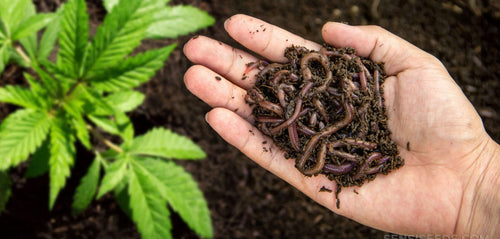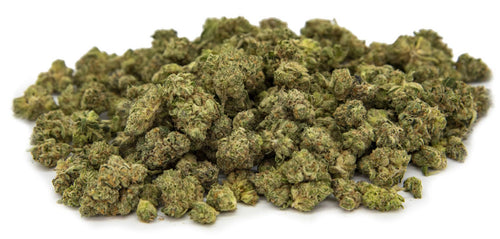#23: Spring Into Action: Your Guide to Successful Cannabis Planting
#23: Spring Into Action: Your Guide to Successful Cannabis Planting
Canadian winters can feel long and dreary, but the arrival of spring signals a time for growth and new beginnings. As warmer temperatures roll in, it’s an ideal opportunity to start thinking about planting your cannabis plants for the season. This is the time of year when you should begin researching varieties, gathering your supplies, and starting the process of germinating seeds or preparing clones for planting.
In the recent past, growing cannabis plants in Canada could land you in a world of trouble. Thankfully, since legalization in 2018, cultivating up to four cannabis plants per household is now allowed in Canada (except Quebec and Manitoba). This change in legislation has opened up many opportunities for cannabis enthusiasts who want to get involved in their own home-based cultivation.
The key to success in any endeavour is to plan ahead and prepare. When it comes to cannabis planting, this means having a clear idea of the varieties you want to grow, how much space you have available for them, and what supplies will be necessary. This is a fun process, and it's absolutely essential for a successful harvest. Here are some things to consider when planning your cannabis garden:
Growing green: Selecting the ideal cannabis strain

When selecting cannabis strains, it’s important to consider your climate and the length of your growing season. Sativa-dominant varieties typically have longer flowering times and may be better suited for warmer climates with longer summers, while indica-dominant strains tend to flower faster but require cooler temperatures for optimal growth. Auto-flowering varieties are good choices for those in areas with short summers.
The height of the plants should also be taken into consideration, as taller varieties may require more space and pruning. Sativas can be tall and lanky, while indicas tend to be short and bushy. Consider the size of your grow space and make sure that you select strains that won’t outgrow it. And make sure to research the genetics of each strain to ensure that you are selecting something that is suitable for your needs.
Seedlings or clones: Which method is right for you?
Are you planning on growing from seed or clones? If you’re starting from seed, you’ll need to germinate them indoors in a warm environment before transplanting them outdoors. This involves placing the seeds in a moist, dark environment such as a paper towel and ensuring they get enough water and warmth to germinate. Once germinated, the seedlings can be transferred to a rapid-rooter to help them establish a healthy root system before they’re ready to be planted outdoors.
If you’re starting with clones, you can skip the germination process. Clones are rooted cuttings taken from a mature cannabis mother plant and are several weeks ahead of starting from seed. They can be planted directly into the ground or into a planter and can adjust to outdoor conditions more quickly. Getting good clones is essential to the success of your grow, so make sure you have high-quality genetics before planting.
Fertile ground: How soil and fertilizers affect your plants

When it comes to soil, there are a variety of options available depending on your budget, location, and preference. Natural soil or compost amended with organic materials like worm castings, bat guano, and compost teas are great choices. A quality organic soil mix will help provide your cannabis plants with the nutrients they need to thrive. Choose a soil that is light and airy to allow for proper drainage and aeration.
You can also opt for a soil-less medium such as coco coir, which is an eco-friendly option that requires minimal effort. These mediums are great for those who don’t have access to quality soil or compost, as they can be amended with fertilizers and other additives. If you decide to use soil-less mediums, make sure to use a quality nutrient system and be aware of the pH balance. Using the wrong nutrients or the wrong pH level can inhibit plant growth and cause nutrient deficiencies.
Let there be light: The importance of lighting for outdoor grows
Cannabis is a sun-loving plant and will need plenty of sunlight to thrive. During its early vegetative growth stage, cannabis will need a minimum of 18 hours of light per day. Once it enters the flowering stage, this will decrease to 12 hours of light and 12 hours of darkness per day.
With outdoor grows, the sun’s rays are usually enough to ensure your plants have plenty of light. A south-facing garden or balcony is usually best for optimal sunlight exposure but east or west exposure will also work. Many gardeners will add additional artificial lighting to their outdoor grow as well. This can be done using LED grow lights, which can provide your plants with the light they need to reach their full potential.
Bugs be gone: Protecting your plants from infestation

Cannabis plants are susceptible to pests and diseases, so it’s important to be aware of these risks and take steps to protect your plants. Insects like aphids, spider mites, and whiteflies are common problems in cannabis gardens that can quickly spread and cause major damage. Natural methods such as companion planting, good air circulation, and maintaining proper soil pH are some of the best ways to prevent pests and diseases from taking hold.
Stay vigilant and check your plants regularly for any signs of distress, such as discoloured leaves or wilting. If you catch any issues early, you can take the necessary steps to fix them before they become major problems. This could involve using natural remedies such as neem oil or insecticidal soap, or it could mean introducing beneficial insects that feed on the pests in your garden.
Digging deeper: How to plant and care for your cannabis plants
Now that you’ve chosen your strain, decided on planting from seed or clones, prepared the soil and fertilizers, and addressed pest control and lighting, it’s time to get your hands dirty! Planting is a simple process – dig a hole slightly larger than the root ball of your plant, place it in the hole gently and cover it with soil. Water thoroughly and your plants are ready to grow!
Cannabis is a resilient plant, but it’s still important to stay on top of care and maintenance. Keep the soil moist by watering regularly, fertilising periodically, maintaining proper pH levels between 5.8 and 6.5, and checking for pests or diseases. Pruning is also important to ensure healthy growth, as it will help remove dead or dying leaves and encourage healthy bud formation.
During the last few weeks of flowering, it will be important to flush your plants. Flushing involves giving your plants plain water to remove any residual nutrient buildup in the soil. This is essential for a quality harvest and will help ensure your plants have the best flavour and potency possible. If you don't flush your plants sufficiently, then the final product could be harsh and unpleasant.
Ready for harvest: Maximizing the quality of your outdoor cannabis

After months of hard work, it’s time to reap the rewards of your labour. Harvesting and curing are the final steps in producing quality cannabis. You'll know it's time to harvest when the buds have stopped growing and become firm and resinous. The trichomes have also changed colour from clear to a cloudy, milky white. This is a sign that your buds are ready for harvest and will be at their peak potency and flavour.
Carefully cut the branches from the plant and trim away any excess leaves. Hang the branches upside down in a cool, dark place with good air circulation and allow them to dry for a few days. Don't rush this process, as drying too quickly can ruin the flavour and potency of your buds. Once the branches are dry to the touch, you can begin to cure the buds.
Once your buds are dry, cure them in airtight glass jars for a few weeks. During this time, the buds will continue to mature and develop their unique flavours and aromas. Open the jar every day for 15-20 minutes to allow for air exchange, and then reseal them. Repeat this process for a few weeks until the buds are cured to perfection.
Aged to perfection: How to store your cannabis like a fine wine
Hopefully, your harvest will be plentiful and you’ll want to store some of it for long-term use. Proper storage is essential for reducing the degradation of cannabinoids and terpenes, as well as preserving potency and flavour. The best way to do this is by using airtight containers such as mason jars.
Keep the containers in a cool, dark place away from direct sunlight or any other heat source. This will ensure that your cannabis stays fresh and enjoyable for longer periods of time. Avoid refrigeration or freezing, as this can cause condensation which could lead to mould growth. With proper storage, your cannabis will retain its quality for months, even up to a year.
Budding beginnings: Tips for newbie cannabis growers
The journey to becoming a successful cannabis grower can be long and challenging. But with a bit of patience and dedication, you can create a thriving grow environment that produces beautiful buds. Here are our top tips for new growers:

Choose the right location: Pick an area that is safe, secure, and has enough space for your plants to grow. It should also have access to direct sunlight, as this will ensure optimal growth.
Have patience: Growing cannabis takes some time and a lot of trial and error to perfect. Be prepared to make mistakes and learn from them!
Research different methods and techniques: There are a lot of different ways to grow cannabis, so find the one that suits your needs. Youtube is a great resource for finding tutorials and other helpful information.
Monitor your plants regularly: Keep an eye on their progress so you can catch any problems before they become too serious. If you notice any signs of stress, act quickly to address the issue.
Pay attention to details: Small things such as pH levels, nutrient levels, temperature, humidity, etc. can have a huge impact on the growth of your plants. Get in the habit of taking regular readings and adjusting accordingly.
Harvest at the right time: Knowing when to harvest can make or break a crop, so pay attention to the trichomes and other signs that indicate it’s time for harvest. A common rule of thumb is to wait until half of the trichomes have gone cloudy before harvesting.
Don't rush the cure: An all too common mistake is to rush the curing process. Take the time to do it right and your buds will be packed with flavour and potency!
Love your plants: A healthy and happy plant will produce the best buds, so be sure to look after your plants with care! They will thank you with an abundance of beautiful buds!
Have fun: Growing cannabis can be a creative and rewarding experience if you take the time to enjoy it. Make the most of it and the journey will be immensely enjoyable.
Cannabis gardening: A rewarding and creative experience!
Growers, you've come a long way! With the right knowledge and practice, cultivating your own cannabis is now within reach. This spring, give your green thumb a try and see what amazing buds you can create. The joy and satisfaction that come with growing your own cannabis is something that can’t be replicated. With a bit of patience, dedication, and love for your plants, you’ll have a successful harvest and quality buds that you can enjoy. Good luck and happy gardening!










